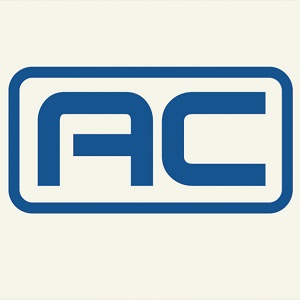⦁ Degreasing: Accumulated oil residuals are cleaned by an appropriate chemical application in a properly ventilated environment.
⦁ Mud and dust removal: Accumulated mud and dust are removed by either pressurized air or damp clothes depending on the level of accumulation.
⦁ Damaged and old paint layer on the compressor body is removed by state of the art laser paint removal system
⦁ https://youtu.be/OH5vtAJFbLU
- Every compressor is carefully disassembled into the smallest piece by following its factory requirements without damaging any components
- Disassembled parts are safely grouped and addressed by labels
- Both before and after the disassembly, functional checks are applied to diagnose and address the problems of the malfunctioning/damaged compressors.
- All moving parts and housings are checked both individually and relative to each other against tear and wear visually and via measurement tools with utmost accuracy and measurement sensitivity. Nonconformities are quantified & marked for further corrective treatment and processing.
- Motor windings check:
- Motor is first checked by insulation tester.
- Both stator and rotor are visually checked against any visible damage, contamination, rust, burn, terminal damages, etc.
- Each winding is voltage/current/insulation resistance tested.
- Rotor rods are tested by special tester.
- If there is any nonconformity such as out of range insulation resistance readings, physical damages, rust, winding defects, burnt windings, then the required corrective action is assigned for further treatment and processing.
- Once a.m. functional and tolerance checks are concluded, it is also concluded as to which parts are to be replaced and which ones are to be treated by proper corrective action.
-
- Replacement parts are listed with their generic part numbers and definitions
- Bearings
- Filter driers
- Oil filters
- Sensors
- Solenoid valves and coils
- Terminal lugs
- Others
- Specific material such as referred formulated oil for given compressor and refrigerant type.
- Special durable paint with original RAL code.
- Replacement parts are listed with their generic part numbers and definitions
- Listed parts are supplied from qualified vendors through an accelerated procurement process.
⦁ Deformations of tear and wear are treated properly and as needed to the required tolerances. This process ensures the perfectly tolerated match of both male and female screws as well as on the tip faces on both suction and discharge sides.
⦁ Deformations of tear and wear are treated properly and as needed to the required tolerances. This process ensures the perfectly tolerated match of both male and female screws with the bearings as well as on the tip faces on both suction and discharge sides.
⦁ Deformations of tear and wear are treated properly and as needed to the required tolerances. This process ensures the perfectly tolerated match of both piston and housing (stationary housing and screw face span)
⦁ Functionality of the solenoid valves are tested (loading and unloading)
⦁ Smooth and proportional operation is ensured
⦁ Depending on the compressor technology, lubrication system (either via differential pressure-driven or via oil circulation pump) all elements; pressurization, oil injection channels, oil filtration system, etc.. are rigorously cleaned, repaired and tested to ensure smooth functionality.
⦁ If found defective visually and by measurement tools, the stator is processed to the original conditions to match the stator requirements.
⦁ Winding renewal
⦁ Insulation resistance improvement
⦁ Mechanical resistance improvement
⦁ Testing and verification
⦁ If found defective visually and by measurement tools, the rotor is processed to the original conditions to match the rotor requirements.
⦁ Testing and verification
⦁ Rusty compressor components treated by the state of the art laser cleaning system
⦁ https://youtu.be/OH5vtAJFbLU
⦁ Treated parts and new parts assembled with parts that did not need any replacements/treatments to reunite the compressor in the right sequence with proper assembly techniques.
-
- Once the reassembly is complete, the compressor goes through the following tests:
- Leak testing: The compressor pressurized by Nitrogen to a slightly higher pressure than the maximum operating pressure for a given period to ensure that there is no leak.
- Motor testing: Via insulation tester and multimeter all motor parameters are measured and recorded.
- Run test: Via proportional power feed, through properly sized industrial grade frequency inverter, the compressor is run tested on our proprietary test bench to ensure that the compressor is smoothly running.
- Performance test (optionally available at an extra cost): All performed on our proprietary test bench; via proportional power feed, through properly sized industrial grade frequency inverter, as well as pressure simulator on the suction and discharge ports, crucial operating parameters of the compressor are tested and recorded in real-time via a data logger and the results are submitted. This report shows the capacity to be expected in comparison with a brand new compressor of the same type/brand/capacity rating.
- Once the reassembly is complete, the compressor goes through the following tests:
⦁ Following the successful result of the testing process, the compressor qualifies to be delivered. Before delivery, the final process is painting. Compressors are painted with industrial paint of the same RAL code of original manufacturer via a pressurized spray painting technique in an isolated and well-ventilated paint cabinet. The paint to be dried and cured.
Following the painting process, the compressor secured on a heavy-duty wooden palette through certified load-bearing tension strips, film layer wrapped against external weather conditions. Ready to ship with shipping documents.

